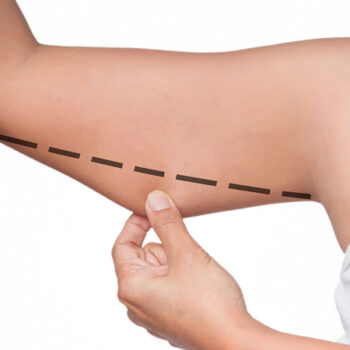A thin waist, a flat and tight stomach undoubtedly adorns the dreams of many women today, where our visuality is almost our identity. We say the woman because the deformations that require tummy tuck operations are often the factors that affect the female body. Today, of course, there are men who have had tummy tuck surgery. However, when we look at the situations in which tummy tuck is needed, we see that there are more women who apply for this surgery.
Excessive weight loss, pregnancy, bariatric surgeries and, of course, loss of elasticity in the skin due to aging are the main reasons for resorting to tummy tuck surgeries.
When it comes to tummy tuck surgery, many people may think of the surgical removal of excess skin in the abdomen. However, tummy tuck surgeries are much more detailed than that.
Sagging in the abdominal region is basically the separation of the tissues in the abdominal region due to different reasons over time, the gradual opening of the muscles and the curvature of the abdominal region outward from the body due to the pressure of the internal organs with the effect of fat accumulation.
The abdomen tends downwards due to reasons such as gravity, fat accumulation, and loss of elasticity of the skin.
In tummy tuck surgeries, not only the excess skin surrounding the abdomen and loosening and sagging is treated, but also the abdominal muscles and internal tissues are repaired. In this way, both long-term results are obtained and the patient has a truly flat and tight stomach.


What Is Tummy Tuck Surgery?
Abdominoplasty is an operation that allows us to intervene in the tissues and muscles in the abdominal region from the inside. Internal tissues are repaired and tightened. Subsequently, the skin surface in the abdomen is stretched and the excess skin is surgically removed. A flatter and tighter appearance is obtained in the abdominal region.
What You Need To Know About The Tummy Tuck Preparation Process
Tummy tuck surgery, referred to as abdominoplasty in the literature, is an operation that requires a preparation process. Before this operation, it is determined whether you have a medical obstacle to receiving general anesthesia by performing certain tests in the first place. Then, while you are preparing for the surgery, if you use blood thinners, you should stop them. In addition to blood thinners, herbal teas that are thought to dilute the blood should be stopped about 10 days before the operation, just like blood thinners.
In addition to all these, even if our patient does not have a condition that prevents general anesthesia, they should definitely share their medical history with our team.
Although some of our patients do not want to take a break from smoking and have difficulty in taking a break, at the end of the day, stopping smoking 1 week before the operation will help you to spend the recovery period more comfortably.
Tummy tuck surgeries are comprehensive. It is important for patients to spend the first 24-48 hours with maximum comfort and rest. The hospital stay is mostly for one day, but for some patients, it can increase to two. If you have an active work life, you should arrange your daily routines so that you stay in the hospital for the first day and then rest at home for 10 days.
How Is Tummy Tuck Surgery Done?
The operation is performed in a fully equipped hospital. The first step for the operation performed under general anesthesia is for your surgeon to visit you in the hospital room and make the final checks. At this stage, the boundaries of the operation area are determined once again by drawing guide lines in the abdominal region, as in every aesthetic surgery. In the meantime, if you have questions that bother you or worry you, sharing them with us will make it easier for you to relax.
The operation begins with a brief sterilization of the incision area, followed by general anesthesia. An incision is then made in the area known as the pubis. Subsequently, the repair and tightening of subcutaneous tissues begins.
Abdominoplasty can be performed with two different techniques. The first of these is the mini tummy tuck surgery, which requires a smaller intervention compared to the tummy tuck operation, the incision is shorter and more easily concealed, and the location of the belly button does not change.
The second is a full tummy tuck surgery, which is performed by making an incision of about 8-10 cm in the sub-abdominal region, which includes a comprehensive intervention, and after the excess skin is removed, the belly button is repositioned.
The technique to be used in patients who apply to us for tummy tuck surgery is decided after the first examination, while planning the surgery.
In tummy tuck surgery, a drain is placed on the patients to prevent possible blood and fluid accumulation in the procedure area. In this way, patient follow-up is also comfortable. In addition to the drain, a urinary catheter is attached to the patients after the operation in order to avoid problems such as bending over during the need for the toilet. The drains and catheter are removed on the second day after the operation.
Depending on the procedure to be performed and the technique to be used, the operation time may vary between 1.5 and 3 hours.
Immediately after the tummy tuck surgery, a special corset is put on the patients in order to make the patients more comfortable and to take the final shape of the abdomen. The operation is completed by dressing the patient in a corset.
What Should Patients Pay Attention To During The Recovery Period Of Tummy Tuck Surgery?
Abdominoplasty is a process that requires a lot of attention, although it has a comfortable recovery process. Our patients can return to their social lives in an average of 7 to 10 days without any problems. However, they continue to wear corsets during this period and should avoid bending and lifting movements that will tire them out and compress their abdominal regions.
Light walks are a good option during this period. At the end of 1.5-2 months, our patients can start sports in a way that does not force themselves too much.
During the recovery period, your surgical scars will initially be red and purple in color due to the novelty of the operation. However, these will not be as irritating as feared as they will remain under your underwear mark. 1 year after the operation, the scar will take the color of your skin tone to a large extent.

 Nederland
Nederland Türkçe
Türkçe Français
Français













